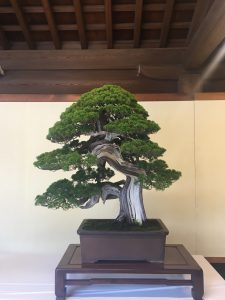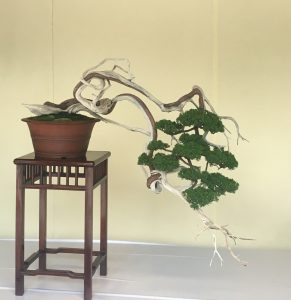Side note: I am writing this post early in the morning the next day because last night I went to straight to bed due to a food induced coma…食べホ代はとても良かったです。ごちそうさまでした
Noto-san’s brief introductory lecture on shinto was easy to understand an extremely helpful for an outsider very much like ourselves. Living in the United States for most of my life, I struggle with the idea of Kami (神), which in English we roughly translate as god. Noto-San used a quote from Motoori Norinaga that explains what Kami is:
“Whatever seemed strikingly impressive, possessed the quality of excellence and virtue and inspired a feeling of awe…” that is Kami.
In ancient Shinto, these kami were associated with nature, such as mountains, waterfalls, great stones, etc. It is all about recognizing and worshipping the immense power of nature.
However, people who demonstrate the “quality of excellence and virtue” can also be kami, so that is why there are people from history that are enshrined.
We learned about the basic components of the shinto shrine through lecture but it was a whole different experience being able to see the shrine. When we got to the shrine I was so impressed at the size of the main Tori-gate, my mouth literally fell open. (:O) After passing through the Sake offerings we were deep into the Chinju no mori (鎮守の杜) which is specifically a “man-made forest” to protect and invite the kami in.


鎮守のもり
At the end of Meiji Jingu tour, I found little treasures: Bonsai Trees!!! I really enjoy admiring these tiny yet majestic trees. These Bonsai Trees are offerings to the shrine. Some of these trees were incredibly old (over eighty years) and they were all unique.


